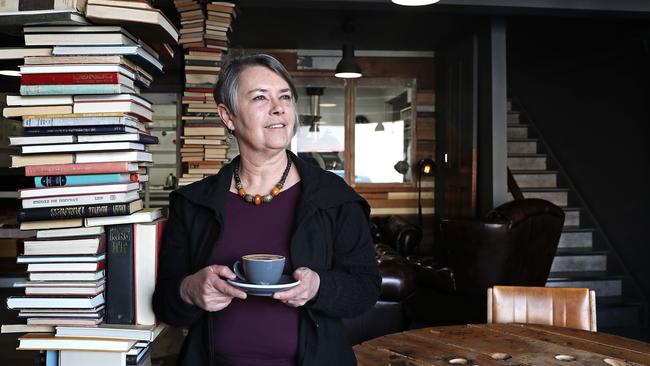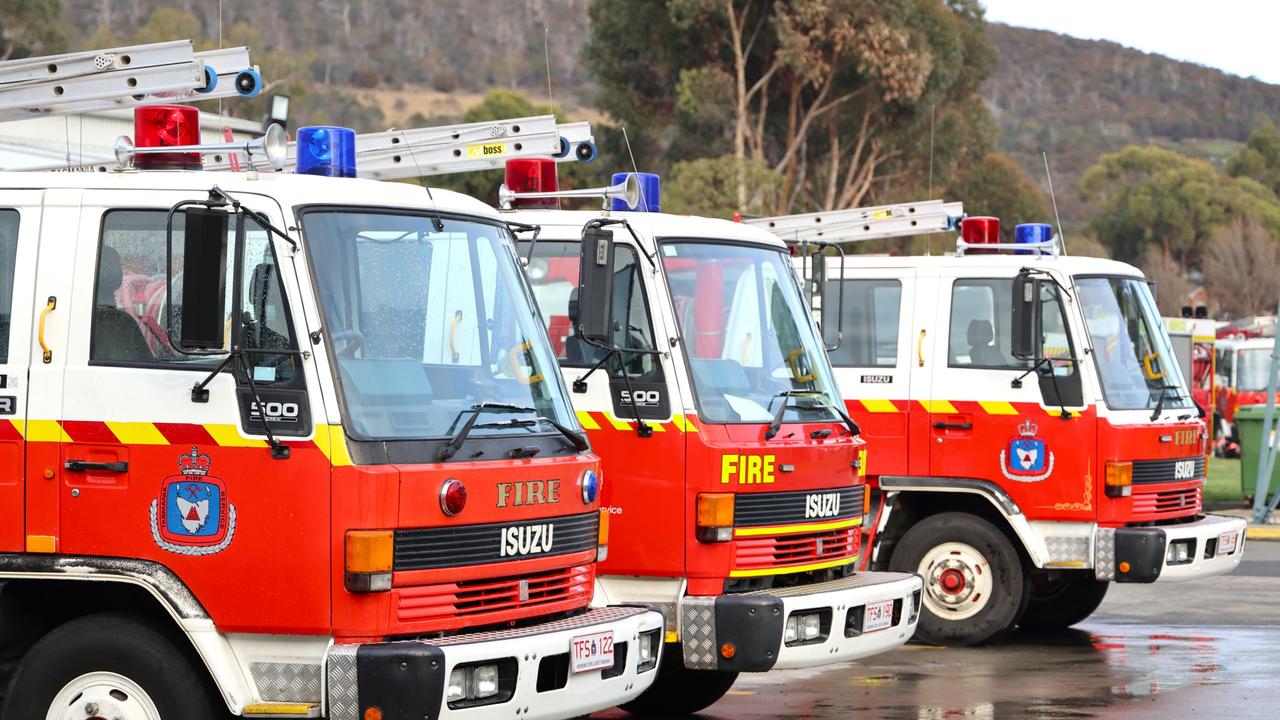Cafe Society: Is Hobart getting too boring?
IT is time to think about Hobart’s built future outside the square, says architect Yvette Breytenbach.

Tasmania
Don't miss out on the headlines from Tasmania. Followed categories will be added to My News.
IT’S one thing to protect our heritage but quite another to deny bold contemporary design a place in the city mix, says Hobart architect Yvette Breytenbach.
The president of the Tasmanian chapter of the profession’s member body, the Institute of Architects, thinks Hobart is erring on the side of safety and the result is dullness.
“The voice that says we need to look after our heritage is really important,” says Breytenbach. “I worry, though, that there is an overemphasis on retaining what exists and that we will become stuck in the past.”
A city needs to be a resilient place able to undergo constant renewal, much like a body replacing its cells, she says. It’s vital we find the right balance between conserving heritage, developing new buildings that bring character to the Hobart brand and adapting some existing structures for new purposes.
While Hobart has an identity, it is not distinctive enough. We can afford to be a lot more playful and inventive.
“We are not the best heritage port in the world,” she says. “We need to build on what we’ve got by adding layers of uniqueness to it.”
Breytenbach wants to see more old and brilliantly designed new architecture side by side.
“The very worst thing one can do is try to copy the old,” she says. “It never works. I think the new can be as extreme and embracing of new technologies as we like. The contrast in a way emphasises the gems of the past.”
MORE CAFE SOCIETY:
DAVID BOWMAN: ACT NOW TO AVOID A FIRE DISASTER
BROOKE WEBB: ADDING A TOUCH OF SPICE TO THE TASTE
BASTIAN SEIDEL: COMMUNITY CARE KEY FOR OUR HEALTH
CLIVE HAMILTON: I WON’T BE ‘BULLIED INTO SILENCE’
HENRY REYNOLDS: WE MUST ACKNOWLEDGE OUR PAST
She sees huge potential for adaptive reuse of buildings as a key part of the residential infill needed to address the city’s housing shortage and traffic congestion. Turning some under-used and disused buildings in the Hobart City Council zone into apartments makes sense.
She would love to see the former Forestry Tasmania headquarters in Melville St, with its architecturally acclaimed dome forest foyer, redeveloped into apartments, with offices out the back.
The revegetated dome area could become a public park, one of many new green zones, some on carpark rooftops, she envisages to improve the city amenity and deepen our brand as “the natural state”.
Our meeting place, Zimmah Coffee, is a cool little example of adaptive reuse. As always, my guest has chosen the venue.
“I love these sorts of hidden places,” says Breytenbach, who often ducks off Murray St and in here for a coffee from around the corner at the architecture firm she owns with her husband.
The roastery cafe was formerly light industrial, but a few deft design and styling changes two years ago transformed it into today’s comfortable caffeinated retreat.
Breytenbach’s vision for a more vibrant city centre — especially after dark, when Hobart’s CBD becomes a dead zone compared with Salamanca — depends on a perspective change.
Breytenbach urges our newly elected Hobart City Council to be bold, visionary and absolutely committed to a people-first focus, from which she says manifold solutions to pressing problems of growth will flow.
“All kinds of goals come from a people-friendly focus,” she says. “How we resolve the traffic, how buildings open into the street.
“It’s not good enough to have just windows along the ground floor of larger buildings.”
On the vexed high-rise front, Breytenbach warns against the unsightly compromise that may eventuate if we block developments on the basis of height alone. If we were then to allow such developments to go ahead at a lower maximum height, they would need bigger footprints to achieve the same floorspace. That risks the proliferation of squat, sun-blocking buildings with featureless frontage and little street appeal.
“There needs to be small-scale texture to accommodate all kinds of different businesses at ground level,” she says.
The architects’ institute is broadly supportive of recommendations by architect and urban design consultant Leigh Woolley in a recent Building Height Standards Review commissioned by the City of Hobart. It includes the preservation of mountain and water views from the CBD and a cap of 60m on buildings in the city heart.
There is still much work to be done to clarify the vision for Hobart’s built future, says Breytenbach, and greater collaboration needed to refine, articulate and drive it.
In the absence of a state architect, she is calling for the creation of a Tasmanian urban future office, a government-funded multi-disciplinary think tank and policy development body.
Sometimes, though, even the best architectural solution won’t cut it, she says. Her view is that there is a place for great architecture and it’s not on the mountain, as per the cable car proponent’s plan.
“No matter how superbly designed, it’s still an intrusion on a natural feature.”
A free Lovable Hobart, Liveable Hobart forum will be hosted by the Institute of Architects as part of Open House Hobart at the IMAS Lecture Theatre on Thursday, November 8, from 6.15-8pm. Book all Open House Hobart events at openhousehobart.org


